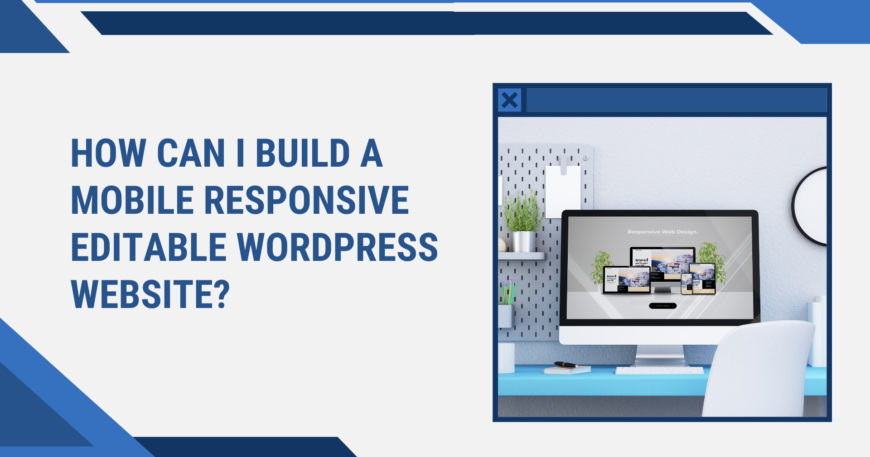To build a mobile responsive and editable WordPress website, you can follow these steps:
1. Choose a Mobile-Friendly WordPress Theme: Start by selecting a WordPress theme that is designed to be responsive, meaning it will adapt and look good on various screen sizes. Look for themes that explicitly mention their responsiveness or mobile-friendly nature.
2. Install WordPress: Set up a WordPress installation on your hosting server. Most hosting providers offer a one-click WordPress installation option.
3. Install the Chosen Theme: Log in to your WordPress dashboard, navigate to the “Appearance” section, and click on “Themes.” Click the “Add New” button and upload the theme you selected. Once uploaded, activate the theme.
4. Customize the Theme: Depending on the theme you chose, there will be different customization options available. Navigate to “Appearance” > “Customize” to access the theme customization panel. Here, you can modify various aspects of your website, such as colors, fonts, layout, and more. Make sure to preview the changes on different screen sizes to ensure responsiveness.
5. Use a Page Builder Plugin: To make your website editable, consider using a page builder plugin. Popular options include Elementor, Beaver Builder, or Divi. These plugins allow you to create and edit your website’s pages using a visual interface, without requiring coding knowledge.
6. Install and Configure the Page Builder: Install your chosen page builder plugin from the WordPress plugin directory. Once installed, you may need to go through a setup wizard or configure the plugin’s settings to integrate it properly with your theme.
7. Create and Edit Pages: With the page builder plugin activated, you can start creating and editing pages. Typically, you’ll have a “Create New Page” option in your WordPress dashboard. Use the page builder’s drag-and-drop interface to add elements, arrange the layout, and customize the content of your pages. Ensure that you optimize the design for mobile devices during the editing process.
8. Preview and Test: After designing your pages, preview them in different screen sizes to ensure they look good and function properly on mobile devices. Test the responsiveness by resizing your browser window or using mobile testing tools.
9. Add Responsiveness if Required: If your chosen theme or page builder doesn’t provide adequate responsiveness, you may need to apply custom CSS or hire a developer to ensure your website is mobile-friendly. Responsive design is crucial for a positive user experience on mobile devices.
10. Publish Your Website: Once you’re satisfied with the design, responsiveness, and editing capabilities of your website, you can publish it. Make sure to regularly update and maintain your website by installing updates for WordPress, themes, plugins, and regularly backing up your data.
Remember to refer to the documentation and support resources provided by your theme and page builder plugin for more specific instructions on customization and responsiveness.






